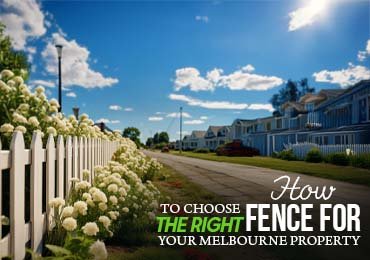- By Admin
- 09 August, 2025
- 7 min Read
Victoria’s Trusted Garden Maintenance & Commercial Care Services
Maintaining a healthy, attractive garden requires more than just watering plants and mowing the lawn. Gardening services in Victoria are designed to keep both residential and commercial outdoor spaces thriving year-round through skilled maintenance and horticultural care. Whether you have a backyard garden or manage large public or commercial grounds, understanding the scope of gardening services and how they differ from landscaping is essential to making informed decisions.
In this guide, we’ll explore what gardening services include, how they compare to landscaping, the typical costs involved, and the role of commercial and contract gardening in Australia—particularly in Victoria’s climate.
What Are Gardening Services?
Gardening services refer to the regular maintenance and upkeep of outdoor spaces, ensuring plant health, aesthetic appeal, and seasonal readiness. These services are tailored to support different types of gardens, from small residential lawns to more complex gardens with diverse plants and features.
Common tasks covered under general gardening services include:
- Mowing and edging lawns
- Pruning trees and shrubs
- Weed control and mulching
- Fertilising soil and plants
- Pest and disease management
- Seasonal planting and garden clean-ups
- Irrigation system monitoring
These services ensure that your garden remains vibrant and healthy, while also preventing issues like overgrowth, soil depletion, or plant diseases.
Gardening Services vs. Landscaping Services
Although closely related, gardening and landscaping are distinct services.
- Gardening is focused on the ongoing care and maintenance of existing plants, lawns, and garden features.
- Landscaping is more structural—it involves the design, planning, and installation of garden features, including retaining walls, turf laying, garden beds, water features, paths, and decks.
Put simply: landscaping creates the garden’s foundation, while gardening keeps it alive and flourishing.
How Much Do Garden Maintenance Services Cost in Australia?
The cost of regular garden maintenance in Australia depends on several factors such as the size of the garden, the complexity of the work, the frequency of service, and location.
- Lawn size (m²)
- Complexity / level of work required
- Frequency of service and access
- Additional services (e.g., aeration, restoration, fertilisation)
Typical rates include:
- Basic maintenance (mowing, weeding, pruning): $45 to $70 per hour
- Advanced or large-scale maintenance (hedging, restoration, tree pruning): $80 to $120 per hour
For ongoing care, many property owners—especially commercial clients—opt for contract gardening agreements, which offer consistent service and often better value for long-term maintenance.
What Services Are Included in Gardening?
- Lawn care: mowing, edging, fertilising, and seasonal treatments
- Tree and shrub pruning: to control growth, promote flowering, and prevent disease
- Weeding and mulching: to keep soil healthy and suppress weed growth
- Pest and disease control: early identification and treatment
- Seasonal planting: adding new plants and replacing dead ones
- Soil care: testing, fertilising, and composting as needed
- Clean-up services: removal of green waste, leaves, and storm debris
For lawns specifically, certain conditions like thatch build-up—an excess layer of dead grass and roots—can hinder growth. In such cases, dethatching becomes an important part of garden restoration. It helps improve water and nutrient penetration, allowing your lawn to thrive. A well-executed dethatching treatment can significantly enhance lawn health and is often recommended during seasonal maintenance cycles. For more insight, explore this complete guide to lawn dethatching in Australia.
What Is Commercial Gardening?
Commercial gardening is the professional maintenance of outdoor areas in business, public, or institutional settings. Unlike residential gardening, commercial gardening is usually performed on a larger scale and may involve ongoing contracts to manage:
- Office complexes
- Apartment blocks
- Educational institutions
- Government and council lands
- Industrial and retail parks
- Resorts, hotels, and hospitality properties
These services ensure that high-traffic areas remain clean, attractive, and compliant with local environmental and safety standards.
Where Is Commercial Gardening Practiced?
- Public green zones: parks, recreational areas, median strips
- Corporate properties: business parks, commercial office campuses
- Hospitality venues: golf courses, resort landscapes, and event spaces
- Institutional grounds: schools, hospitals, universities
- Retail and shopping centres: including carparks and entryways
The goal is to maintain functional, visually pleasing environments that serve both the business and the community.
Is Commercial Gardening Intensive or Extensive?
- Intensive gardening: involves high input—labour, irrigation, fertilisers—for the maintenance or production of plants in concentrated areas. This is typical of flower farms, greenhouses, or specialty crops.
- Extensive gardening: lower input per square metre, spread over larger areas—such as grass mowing, tree trimming, or general site upkeep.
Most commercial property maintenance falls under extensive gardening, with targeted intensive care in high-visibility zones.
What Crops Are Grown in Commercial Gardening?
- Leafy greens: lettuce, spinach, kale
- Herbs: basil, mint, coriander
- Root vegetables: carrots, beets, radishes
- Flowers and ornamentals: both native and exotic species
- Potted plants and shrubs for retail and wholesale nurseries
These crops are cultivated for both local consumption and commercial resale across Australia.
What Climate Supports Commercial Gardening in Victoria?
- Warm summers that support rapid plant growth
- Mild winters with lower risk of frost
- Consistent rainfall, particularly in southern and coastal regions
- Defined seasons, allowing structured planting schedules
These climatic conditions are ideal for both maintenance-focused services and crop production in commercial settings.
Supporting Long-Term Garden Health Across Victoria
From home gardens to public parks and corporate campuses, garden maintenance plays a crucial role in shaping beautiful, sustainable spaces. With the right care—tailored to seasonal needs, local climate, and property type—outdoor areas can stay green, healthy, and ready for every season.
If you’re seeking dependable, experienced support for your garden—whether residential or commercial—Skynature offers thoughtful, long-term solutions across Victoria.


